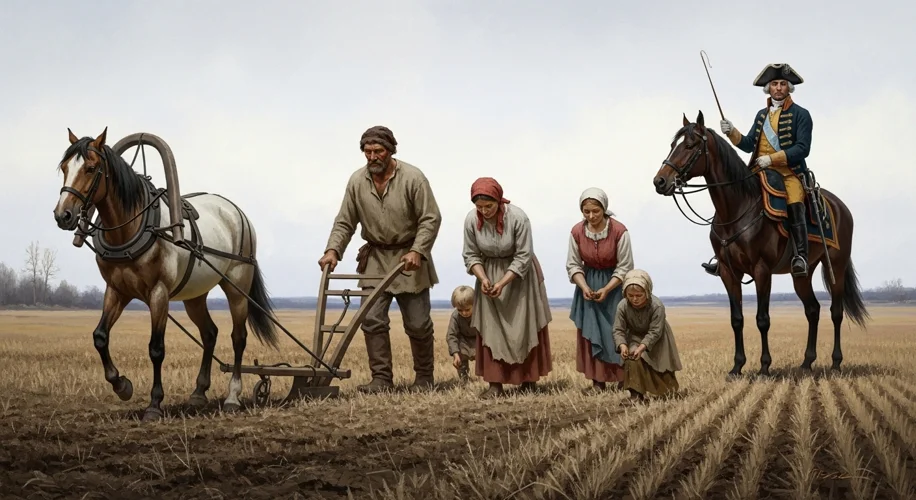Hello fellow history enthusiasts! Rowan here, back from another research trip that’s left me pondering the deep roots of economic systems. Today, I want to take you to 18th-century Russia, a time when the institution of serfdom wasn’t just a social structure, but a foundational element that profoundly influenced the nation’s economic trajectory.
When we talk about serfdom, we often think of peasants tied to the land. And that’s true. But in Russia, this system evolved into something particularly entrenched, creating what historians call ‘extractive institutions’. Essentially, these are systems designed to benefit a small elite at the expense of the majority.
Imagine Russia in the 1700s. The vast majority of the population were serfs. They weren’t slaves, but they were far from free. They were bound to the land owned by nobles, and their labor, produce, and even their lives were largely controlled by their landlords. The nobles, in turn, owed military service to the Tsar. This created a reciprocal, albeit highly unequal, relationship.
My research, often involving poring over old land records and personal correspondences in dusty archives, reveals just how pervasive this system was. Serfs couldn’t legally leave the estate, marry without permission, or engage in trade independently. Their lives were dictated by the needs of the landowner and the state.
What does this have to do with economics? Everything. Because the system was designed for extraction, not innovation or broad-based prosperity. Landowners, secure in their control over a labor force that cost them little to nothing, had little incentive to invest in new farming techniques or technologies. Why improve efficiency when you can simply demand more labor or output from your serfs?
This lack of investment meant agricultural productivity remained low compared to Western Europe. Furthermore, it stifled the development of a free labor market and a robust middle class. Entrepreneurship was difficult when the majority of the population was essentially property, and markets were heavily controlled by the landed gentry.
Even as other European nations began to shift towards more market-oriented economies and industrialization, Russia’s serfdom-based system acted as a significant drag. It created a social and economic structure where wealth and power were concentrated, and upward mobility was severely limited. The surplus generated by the agricultural sector was largely extracted by the nobility, rather than being reinvested into broader economic development.
It’s fascinating to consider how these deeply embedded institutional patterns, forged in the era of serfdom, continued to shape Russia’s economic challenges and opportunities for centuries, even after its eventual abolition in 1861. Understanding this historical context helps us appreciate the long-term consequences of social and political structures on economic development. It’s a powerful reminder that the past, in many ways, is never truly past.
Join me next time as I explore the surprisingly sophisticated communication networks of 18th-century merchants!

